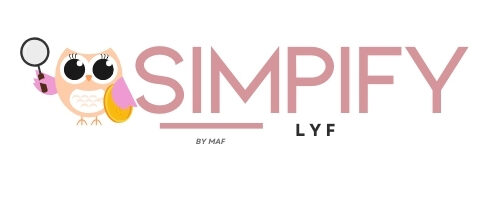
The Ghosting Game: Why We Avoid Our Bank Accounts
Let’s start with a confession. For most of my twenties, I treated my bank account like a scary ex I occasionally stalked from a distance. I would peek at the balance, feel a surge of panic, and then promptly ghost my finances for weeks.
I knew I should be budgeting, saving, and building an emergency fund. But every article about money felt like a judgmental lecture delivered by a CEO who started saving at age five. The shame of not knowing where to start was paralyzing.
That feeling, my friends, is financial anxiety. It’s the invisible weight that sits on your chest every time you hear the word “inflation” or get an unexpected bill.
I realized that to simplify my life, I couldn’t just manage my money; I had to manage my relationship with it. This is how I built my own “Feel-Good Fund”—a simple, non-judgmental system that anyone can start today. I’m sharing these hacks and solutions with you because simplifying our lives together is what SimplifyLyf is all about.
Step 1: Ditch the Shame and Name the Fear
The first, most human step in simplifying your money is acknowledging that it’s okay if you feel anxious. We’re navigating student loan debt, volatile economies, and the highest cost of living a generation has faced.
Your goal isn’t perfection; your goal is clarity.
The SimplifyLyf Mantra: Clarity, not complexity.
I started by giving my saving accounts silly, motivating names—not just “Emergency Fund,” but “The Breakup Buffer” or “Future I-Quit-My-Job Fund.” This small mental shift made saving feel less like a chore and more like building a personal safety net that was just for me.
Step 2: The Easiest Budget You’ll Ever Keep (The 50/30/20 Rule)
I tried all the extreme budgets. They all failed because they required too much maintenance friction.
The budget that finally clicked for me—and the one I recommend to everyone—is the simplified 50/30/20 Rule:
- 50% Needs: Rent, groceries, minimum debt payments, utilities. (The things you must pay.)
- 30% Wants: Going out, hobbies, shopping, takeout. (The fun stuff that keeps you sane.)
- 20% Savings & Debt: This is the non-negotiable slice dedicated to your future self.
The Automation Solution: I Saved You the Search Time
This is where the magic happens. You need to put your savings on auto-pilot so you literally cannot spend the money. This is the heart of the “Feel-Good Fund.”
I spent hours researching the best accounts so you don’t have to deal with the overwhelm. I found the ones that require the least setup friction and offer the best returns.
Step 3: The Psychological Payoff: Why Starting Small Works
You might think following these simple steps will get you rich overnight. It won’t.
This system is solely designed to help you build a resilient financial foundation and reduce daily anxiety. Getting rich involves entirely different strategies—like leveraging complex insurance policies or having a trust fund—which are not our focus here. We are focused on stability, not speculation.
The true, life-changing payoff is in the small, consistent habits. Here is what this low-effort, automated system actually buys you:
The Real Benefit: Mental Energy, Not Money
- It Buys You Peace of Mind (The Mental Shift): Financial anxiety is exhausting; it’s like having a part-time job you never applied for. By automating your 20% savings, you stop relying on willpower. Your mind immediately feels quieter because the most important task—saving for your future—is already done.
- It Builds Momentum (The Habit Loop): Starting small is the only way to build a lasting habit. When you see that a $50 transfer successfully hits your Feel-Good Fund, you get a small mental reward. These small, repeatable wins build financial confidence and give you the motivation to tackle bigger problems, like paying down debt.
- It Fosters Resilience (The Stress Manager): Having a small buffer—even just $500 in that separate HYSA—acts as a psychological shock absorber. When the car tire goes flat or the vet bill arrives, the money is already there. This small habit manages major stress, preventing an unexpected expense from spiraling into shame or debt.
- It Changes Your Mindset: By automating stability, you shift your brain away from a scarcity mindset (I don’t have enough) to an abundance mindset (I am prepared).
Step 4: The Trusted Tools to Automate Your Fund
To make Step 2 happen, you need bank accounts that won’t charge you fees or trap your money with minimum balance requirements. I’ve broken down the best options for both US and Canadian readers who prioritize trust and simplicity.
Top 3 Trusted HYSAs for US Readers 
These accounts are widely recognized, FDIC-insured, and have the lowest friction.
| Rank | Bank | Key SimplifyLyf Features | Why It’s a Trusted Choice |
| 1 | Discover® Bank | Zero Fees, Zero Minimums, Great Service. Consistently offers a competitive APY with no minimum balance and no monthly fees. | A major US bank with a highly reliable platform and 24/7 U.S.-based customer service for peace of mind. |
| 2 | American Express National Bank | Security and Seamless Setup. Strong APY with no fees to open and no minimum balance required. | Amex is globally synonymous with security. Choosing them removes the friction and anxiety of linking new accounts. |
| 3 | Capital One 360 Performance Savings | Hybrid Access and Flexibility. Offers a competitive APY while providing the option of visiting physical branches/ATMs (where available). No fees and no minimum balance required. | Perfect for the reader who wants the high APY of online banking but the reassurance of a large, well-known US institution. |
Export to Sheets
Top 3 Trusted HYSAs for Canadian Readers 
These CDIC-insured accounts offer significantly better rates than the Big Five, with low fees.
| Rank | Institution | Key SimplifyLyf Features | Why It’s a Trusted Choice |
| 1 | EQ Bank (Equitable Bank) | Highest Consistently High Rate. Known for offering one of the best HISA rates in Canada. No monthly fees. No minimum balance. | EQ Bank has established itself as the top digital choice for maximizing savings with a simple, secure platform. |
| 2 | Tangerine Bank | No-Fee Banking, Easy Integration. The online banking division of Scotiabank. Offers no-fee checking and savings that integrate easily. | Excellent for simplification, allowing readers to manage daily money and their “Feel-Good Fund” in one simple place. |
| 3 | Simplii Financial | Digital Simplicity, Big Bank Backing. The direct banking division of CIBC. Offers a competitive HISA rate and often has promotions. No monthly fees. | Provides the peace of mind of being backed by a major Big Five bank (CIBC) while maintaining a low-fee, high-rate structure. |
Export to Sheets
Step 4: The Action Plan to Protect Your Peace of Mind
The goal of the Feel-Good Fund isn’t about getting rich; it’s about protecting your resilience. Once your systems are set up, you need a quick, low-effort routine to maintain that peace of mind.
This is the final, simple action plan that brings your whole system together:
Sustaining SimplifyLyf: My Commitment to You
I started this blog because I truly love finding these helpful hacks and reading for you so you don’t have to waste time. As a solo person, I’m transparently exploring how to cover the costs of running this resource so I can keep doing the research.
I only recommend products that remove stress and simplify life—because those are the only products that matter.
- The Hosting: I run this entire site using WordPress hosted on Hostinger. I chose them because they were the most reliable, affordable option for a beginner solo blogger, letting me focus on content, not complex tech.
- If you want to start your own simplified side hustle, you can check out the same affordable plan I use right here: [ Affiliate Link: Start Your Low-Cost Site]
My Promise to You: I link to products only because they genuinely simplify life. When you click, you support the research for this resource, allowing me to keep doing the work for you—keeping your life simpler and your foundation stronger.
The Weekly Mindful Money Check-In (5 Minutes)
Once you have your systems automated, the anxiety begins to fade. Your final simplified step is to check your finances with intention, rather than panic.
- Check the 20% Account: Look at the rising balance in your Feel-Good Fund. Feel proud!
- Review the 30% Account: Glance at your “Wants” budget to see how you’re pacing. No judgment, just awareness.
- Find a New Solution: Check out the latest SimplifyLyf affiliate roundup for a service that can save you money next month. I found the solution, you saved the time.
Financial health isn’t about being resilient. By simplifying the system and removing the emotional friction, you’re not just saving money—you’re saving your peace of mind.
